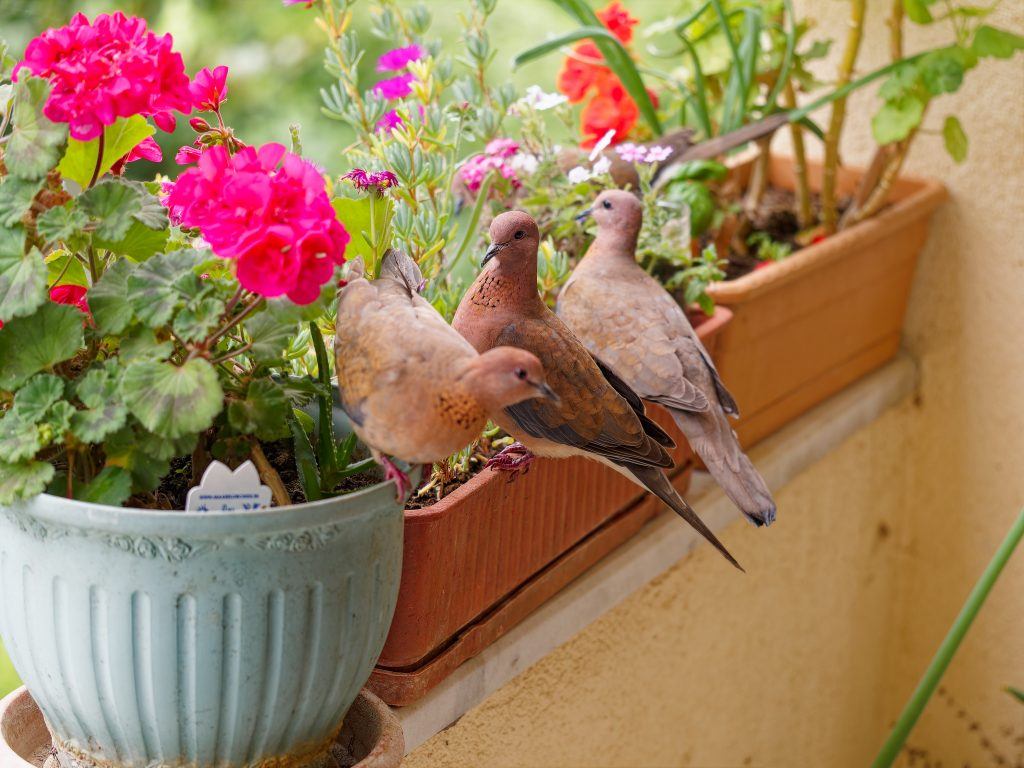Bird Control
Effective ways of keeping birds out of your garden
Understanding the Role of Birds in Urban and Suburban Settings
Birds are a natural part of urban and suburban ecosystems. They can help you pollinate your garden and eat the pesky insects that tend to take over your garden and veggie patch. Pest birds however are not native to an ecosystem. Pigeons for instance were introduced to New Zealand from North Africa and Southeast Asia.
They are known to threaten native bird species by dominating an area in large numbers, damaging nests, and competing for food and nesting space. They can also feed on your veggie patch and make nests close to or on your property, causing a nuisance and damaging property.
Due to their rate of reproduction they can easily create an infestation that becomes difficult to manage and that will require bird control solutions.
Bird behaviour
Birds are smart. They can recognise deterrents and behaviours of others in their environment. They are also attracted to their own scent. Where they are born and fledge they’ll return to, seeing the spot as their home.
They don’t like water and congregate where there is a food source. Being aware of these elements of bird behaviour will help you find effective bird control solutions and effective bird deterrents.
Effective Bird Deterrent Strategies for Gardens & Urban Environments
The best strategy for dealing with pest birds is to make the environment as unpleasant as possible for them. To do this effectively, you need to irritate their visual, auditory and olfactory senses, and ensure that you eliminate the things that attract them in the first place. In urban environments you can prevent birds from landing on your windowsill by using a toxic-free product like Bird Free gel that irritates their senses.
You can also ensure that you regularly pressure wash areas where pest birds congregate. This removes their droppings and their scent. In your garden, you can keep bushes and trees well-trimmed back, remove empty nests that are visible and ensure there is no food source like bird feeders or a neighbour supplying food close to your property.
H3: Sonic Sound Devices
Sonic devices make use of sound frequency to incapacitate, attack or irritate an opponent or undesirable element. Ultrasonic bird repellent devices are silent to most humans and ideal for enclosed or semi-enclosed spaces. Sonic repellers provide wide coverage, can target specific problem bird species and is ideal for large and outdoor spaces.
Visual Bird Deterrents
Visual bird deterrents are visual scare products designed to intimidate pest birds away from your property. There are many different types of visual deterrents you can try, from bird deterrent equipment to any shiny and rotating objects.
It’s important though to be aware that birds quickly get used to static scarers of any kind, thus the pattern change of these devices and other visual deterrents is vital.
Natural ways to keep birds out of your garden
There are a few natural ways to keep birds out of your garden. Visual and sonic deterrents are non-toxic and humane. We suggest you pair them together to create a multi-pronged approach. You also need to ensure these devices are adjusted weekly so the birds don’t get used to them.
You do this by changing their location, sound frequency and visual movement timing. Other ways you can keep birds out of your garden is to remove any bird feeders and bird baths and ensure there aren’t any visible food sources around.
Enclose your veggie patch with hoops and netting and check that large shrubs and trees are trimmed back so there aren’t cosy spots for the birds to nest and roost. For windowsills try non-toxic and eco-friendly Bird Free gel and clean visible bird droppings in and around your property.
The Issue with Phoenix Palm Trees
Phoenix palm trees originate from the Canary Islands and are considered a pest in New Zealand. However they have been a favourite of councils for many years and are extensively used as landscape plants. They tend to be planted in rows lining streets, in public green spaces, or at the entrance of new commercial and residential development complexes.
They are large bushy palms that can grow to 18m tall. Because of their bushy and dense foliage they form the perfect shelter for birds – safe and dry. These palms attract birds, especially pigeons, so a targeted deterrent strategy is to keep them trimmed way back with regular pruning, to have bird nests removed by a professional, or ultimately to have the palms removed completely by a qualified arborist.

